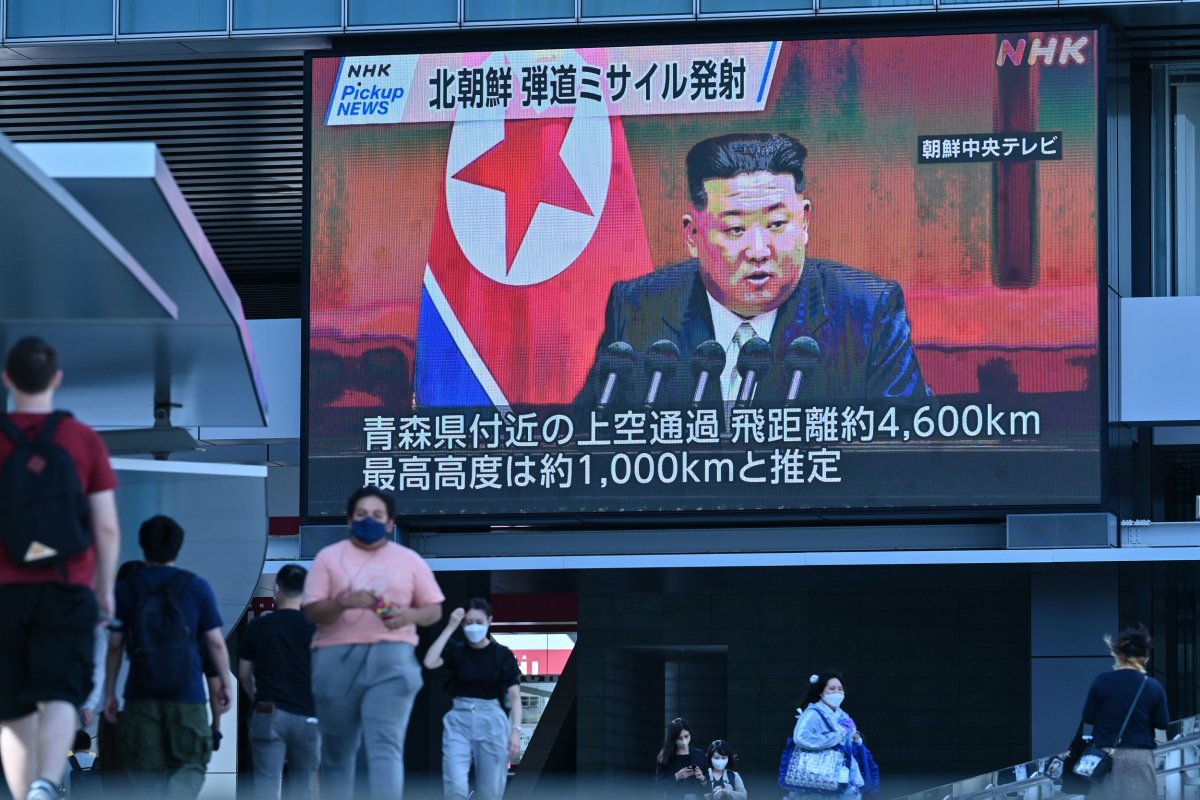North Korean leader Kim Jong Un is vowing to build "the world's most powerful" nuclear arsenal mere weeks after conducting tests of multiple short-range ballistic missiles and an intercontinental ballistic missile (ICBM).
North Korean state media outlet KCNA reported the leader's ambitions, coming after a "test firing of a new kind" of ICBM called the Hwasong-17 on November 18 that is reportedly capable of reaching the United States.
The New York Times reported that about 88 ballistic and cruise missiles have been launched as part of 34 North Korean weapons tests this year, including one missile earlier this month that hit water approximately 35 miles off South Korea's east coast.
Kim Jong Un's aspirations still leave a lot to be desired.

According to estimated 2021 nuclear inventories compiled by the Arms Control Association (ACA), more than 90 percent of the world's approximate 13,080 nuclear warheads are possessed by the U.S. and Russia.
The U.S. in particular possesses some 5,550 warheads, trailing Russia by about 700 warheads.
North Korea, meanwhile, had an estimated 40 to 50 warheads in its arsenal. The ACA acknowledges that the country's actual stockpile remains unknown.
Jenny Town, senior fellow at the Stimson Center and director of 38 North, told Newsweek that the North Korean leader's words were directed at his own domestic audience.
"I wouldn't take it that literally," she said. "The political message is that they will continue to build up their defenses against persistent threats.
"Note again, that unlike formulations from before 2019 or so, the nuclear program is no longer conditional—the phrasing isn't 'as long as the U.S. maintains its hostile policy...' but rather asserting that the program is here to stay."
Satellite images procured in the summer of 2021 of North Korea's uranium enrichment plant in Yongbyon were believed by experts to be an indication that production at the site would ramp up by as much as 25 percent.
In April 2010 in Prague, the New Strategic Arms Reduction Treaty (New START) was signed by the U.S. and Russia and went into effect on February 5, 2011.
Described by the ACA as the "first verifiable U.S.-Russian nuclear arms control treaty to take effect since START I in 1994," it was extended an additional five years on February 3, 2021.
The nuclear Nonproliferation Treaty (NPT) in 1968 far preceded New START and was negotiated by the U.S. and likeminded nations to decrease nuclear tensions. North Korea withdrew from the treaty in 2003, while countries including Iran, Libya and likely Syria are believed to have violated treaty terms.
The Federation of American Scientists (FAS) reported that, based on data from early 2022, the overall inventory of nuclear weapons is declining. However, the decline is slowed compared to the previous 30 years and is occurring because the U.S. and Russia are still dismantling previously retired warheads.
"In contrast to the overall inventory of nuclear weapons, the number of warheads in global military stockpiles––which comprises warheads assigned to operational forces––is increasing once again," the FAS reported.
Frank Aum, a senior expert on Northeast Asia at the U.S. Institute of Peace, told Newsweek that North Korea is following through on the approach that Kim Jong Un warned back in 2021 at the 8th Party Congress—that North Korea would approach the U.S. based on the principle of "power for power, goodwill for goodwill."
The U.S. embarked on what Aum called "a global pressure campaign" against North Korea between 2013 and 2018, involving diplomatic isolation, economic sanctions and military deterrence. It was the longest absence of official bilateral engagement over the last 30 years, he noted.
"When the U.S. engages with North Korea, it tends to behave a lot better," Aum said. "We saw this between 1994 and 2002, when the U.S. and North Korea complied with the agreed framework and were in consistent peace and missile talks.
"During this period, North Korea conducted only one missile test and did not reprocess any plutonium. Similarly, in 2011 and 2018, when the U.S. and North Korea were in negotiations, North Korea refrained from any nuclear or missile testing."
Recent provocations involving multiple missile tests were likely a response to "the heightened pace of U.S.-Republic of Korea military exercises and the presence of U.S. strategic assets near the Korean Peninsula," Aum added.
Update 11/29/22, 10:10 a.m. ET: This story was updated to adjust the timeline of the U.S. "global pressure campaign" against North Korea.
Uncommon Knowledge
Newsweek is committed to challenging conventional wisdom and finding connections in the search for common ground.
Newsweek is committed to challenging conventional wisdom and finding connections in the search for common ground.
About the writer
Nick Mordowanec is a Newsweek reporter based in Michigan. His focus is reporting on Ukraine and Russia, along with social ... Read more
To read how Newsweek uses AI as a newsroom tool, Click here.








